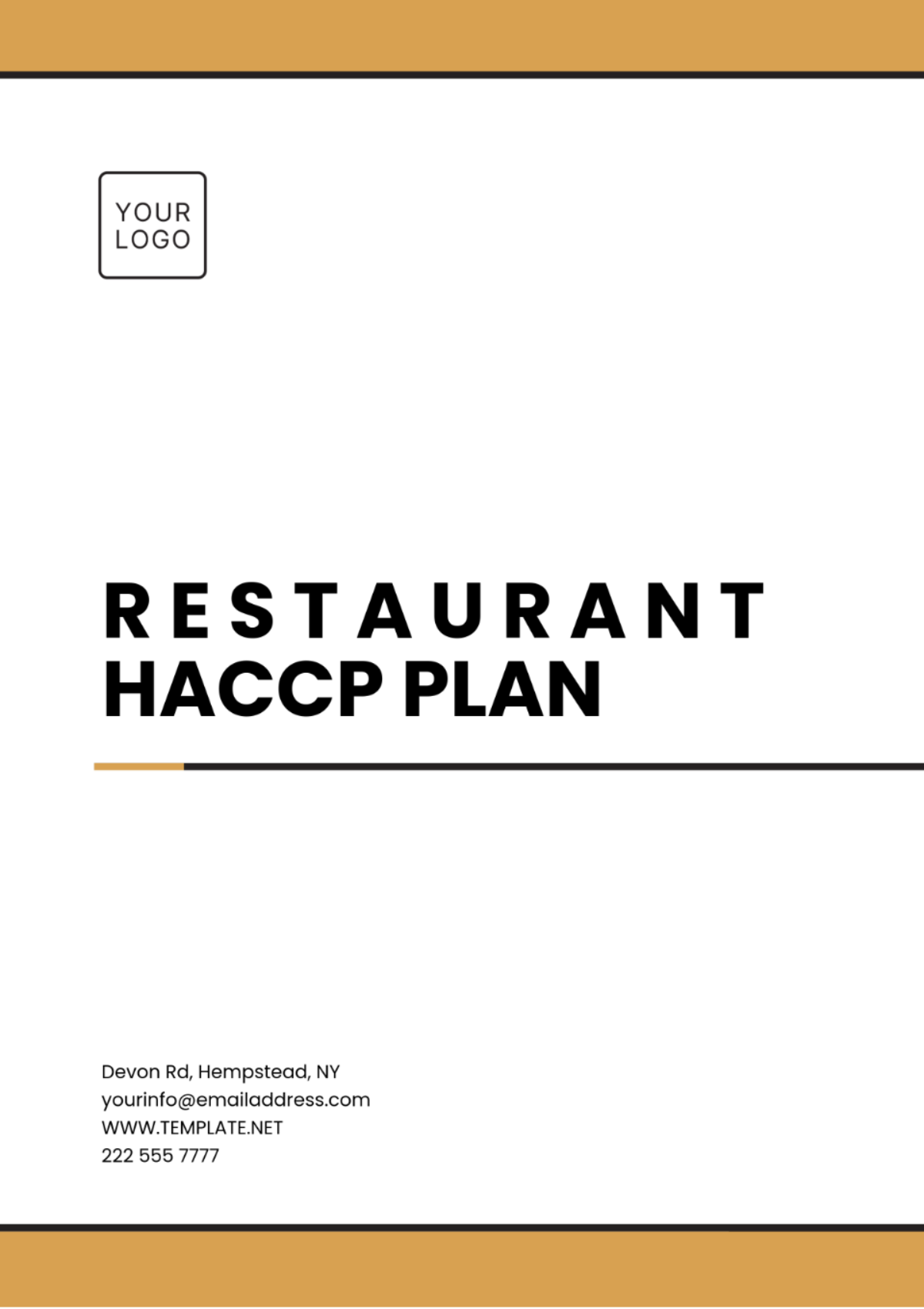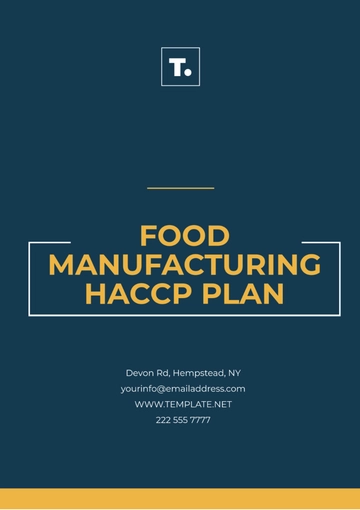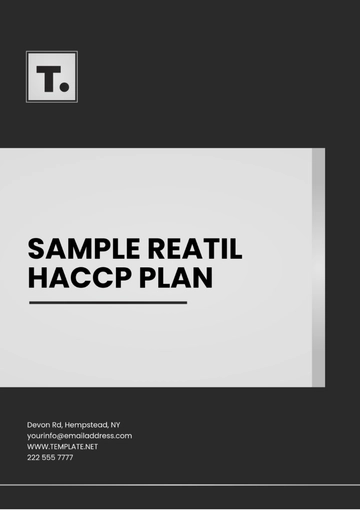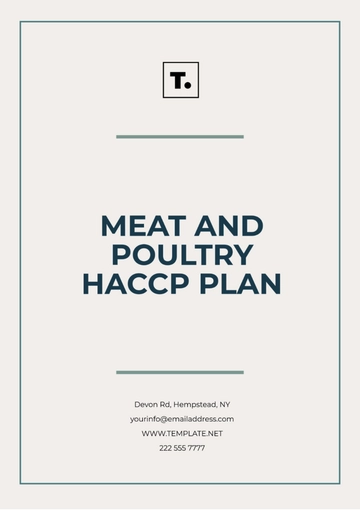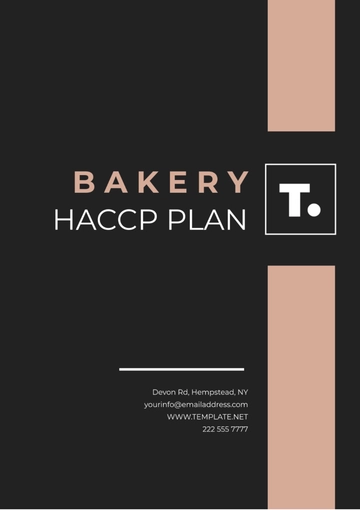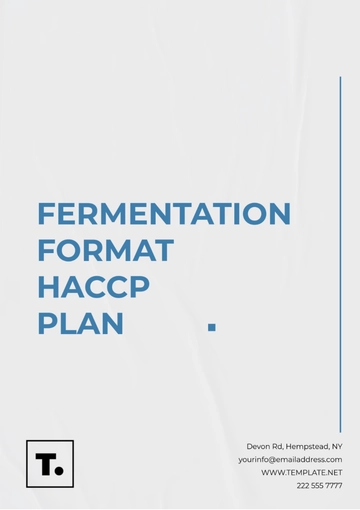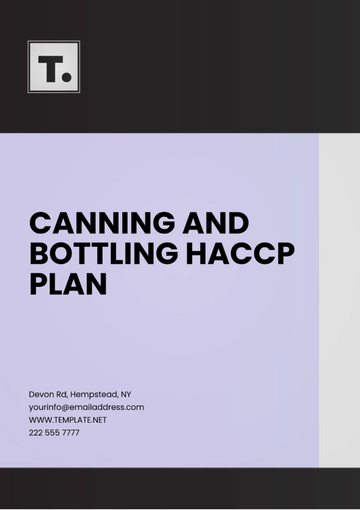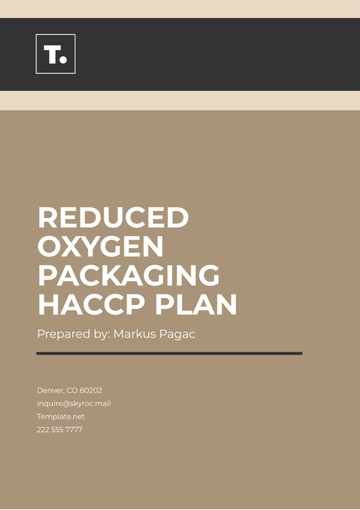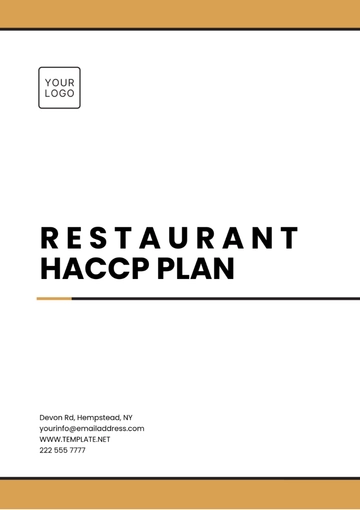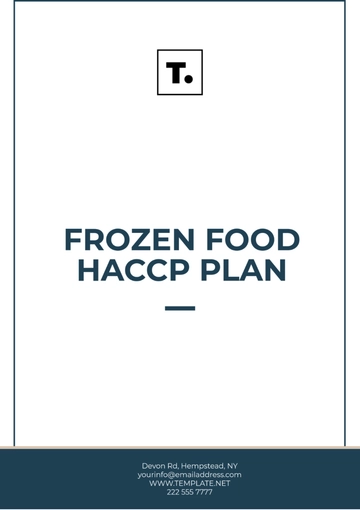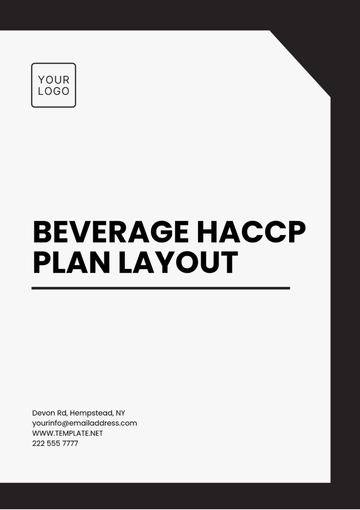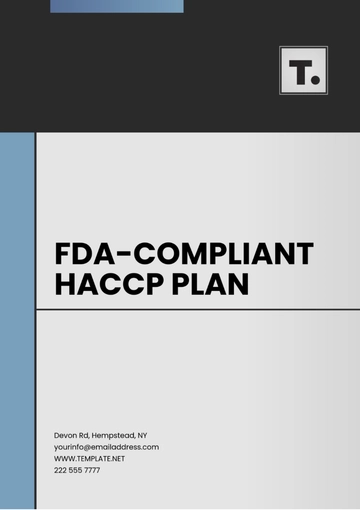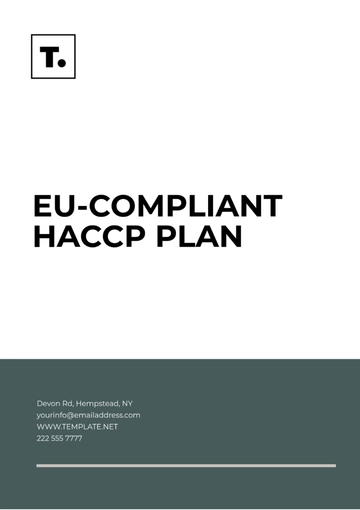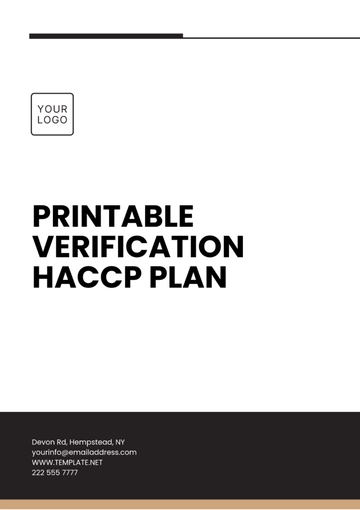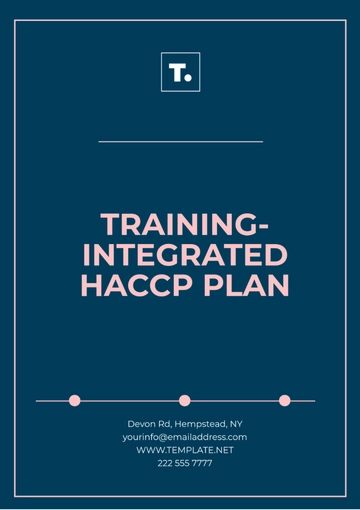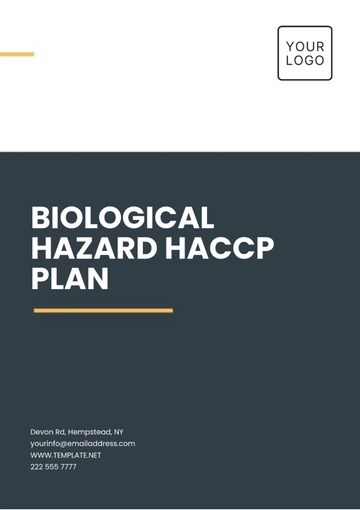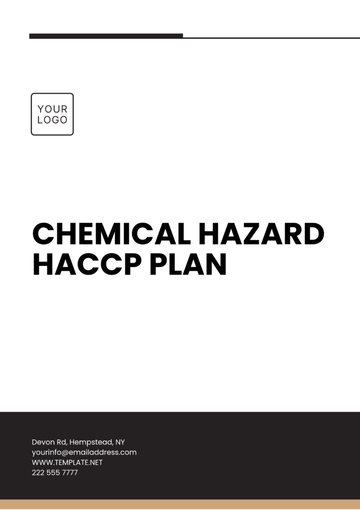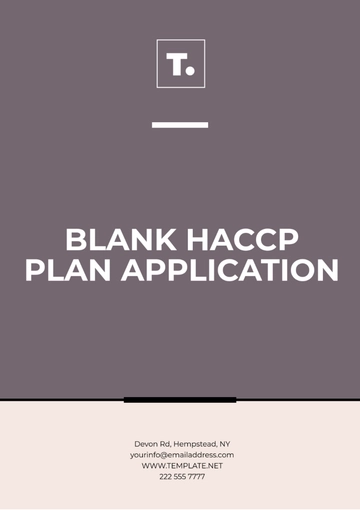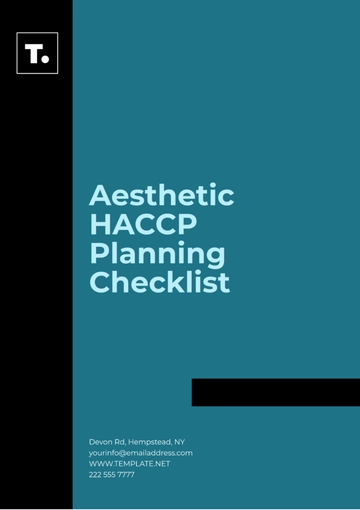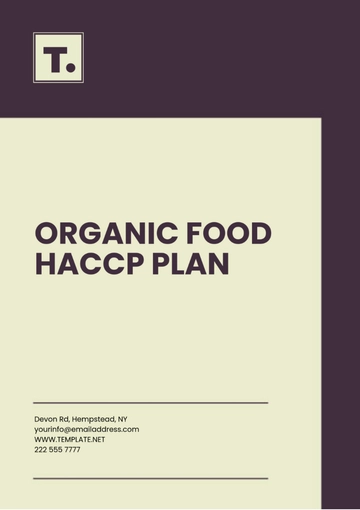Restaurant HACCP Plan
Date: February 20, 2060
Prepared by: [YOUR NAME]
I. Introduction
The purpose of this Hazard Analysis and Critical Control Point (HACCP) plan is to ensure the highest standards of food safety in our restaurant. By systematically analyzing each stage of food processes, we aim to identify potential hazards and implement effective measures to prevent foodborne illnesses. This plan not only supports compliance with food safety regulations but also fosters a culture of safety and quality in our operations, ensuring the well-being of our customers and staff.
II. Scope
This HACCP plan encompasses all stages of food preparation and handling within our restaurant, including:
Receiving: Inspection and acceptance of raw ingredients.
Storage: Proper storage conditions for all food products.
Preparation: Safe handling and preparation practices.
Cooking: Procedures to ensure thorough cooking.
Cooling: Rapid cooling techniques to minimize bacterial growth.
Reheating: Ensuring foods are reheated to safe temperatures before serving.
Serving: Maintaining food safety during service to customers.
III. HACCP Team
Our HACCP team consists of individuals with diverse expertise to effectively implement and maintain food safety standards:
IV. Hazard Analysis
Through comprehensive analysis, we have identified potential hazards associated with food handling and preparation, categorized as follows:
Biological Hazards: Includes bacteria (e.g., Salmonella, E. coli), viruses (e.g., Norovirus, Hepatitis A), and parasites (e.g., Giardia).
Physical Hazards: Includes foreign objects such as glass, metal shards, plastic, or wood that may inadvertently enter food products.
V. Critical Control Points (CCPs)
We have established the following Critical Control Points (CCPs) to manage identified hazards:
VI. Monitoring Procedures
Temperature Checks: Regular temperature readings using calibrated thermometers at critical stages (receiving, cooking, cooling, and reheating).
VII. Corrective Actions
If monitoring shows a departure from set limits at any CCP, the corresponding corrective actions will be taken.
VIII. Verification Procedures
Verification procedures are critical to ensuring the ongoing effectiveness of our HACCP system. These will include:
Annual Reviews: A thorough annual review of the HACCP plan, with updates made as necessary to reflect changes in processes, regulations, or new hazards.
IX. Record Keeping
Comprehensive documentation is crucial for proving compliance and verifying the effectiveness of our HACCP plan, so we will keep the following records:
Plan Templates @ Template.net
